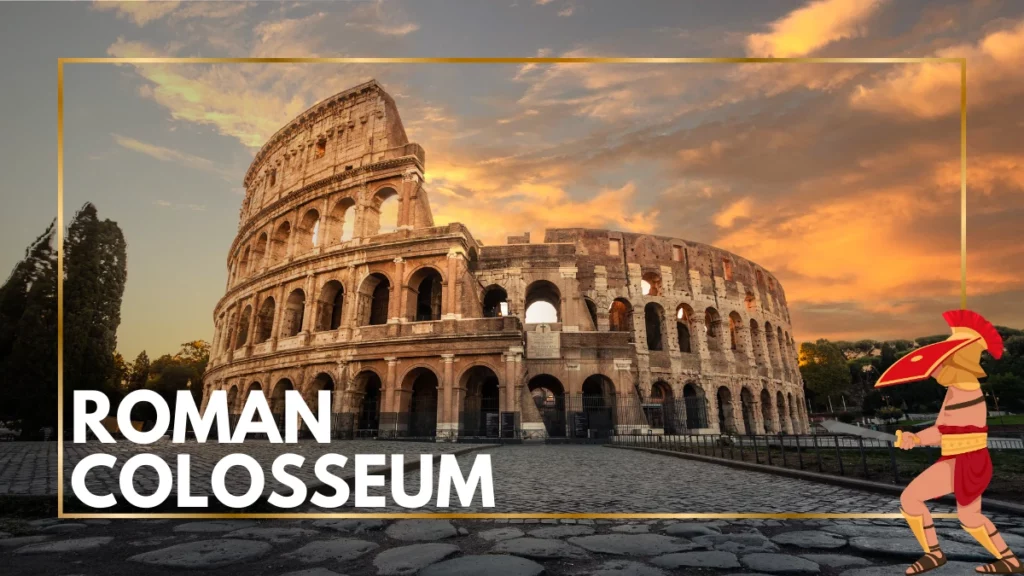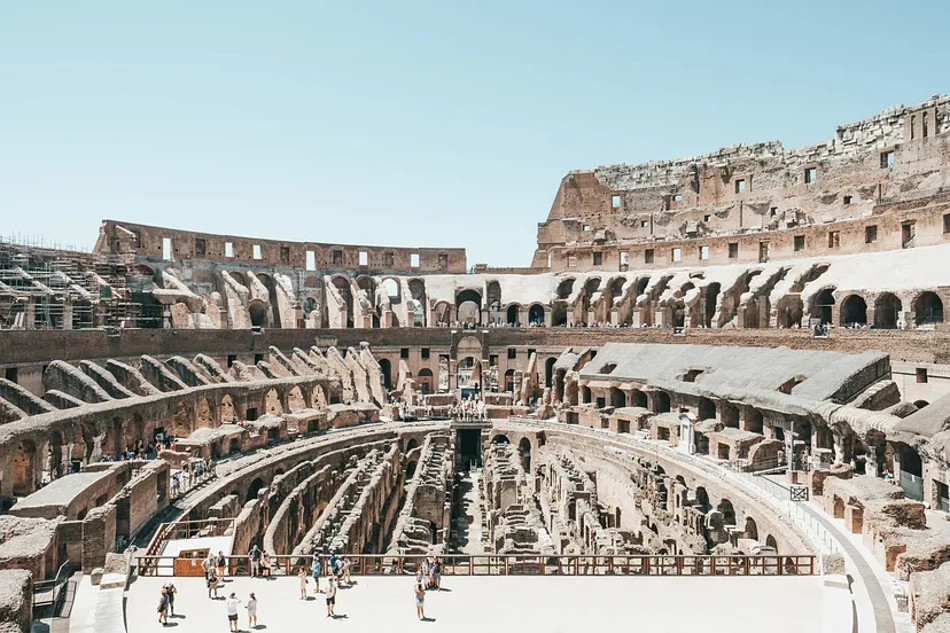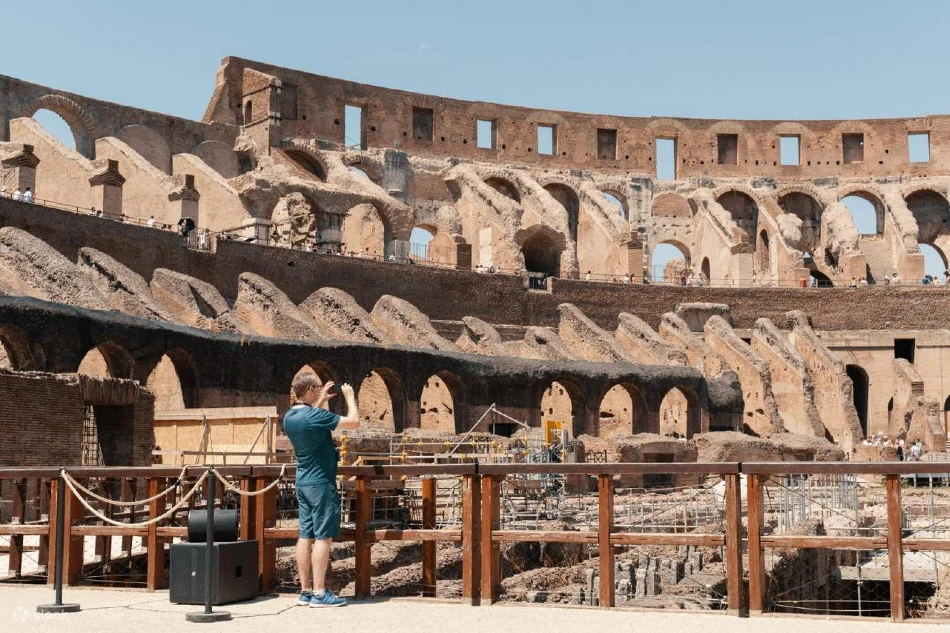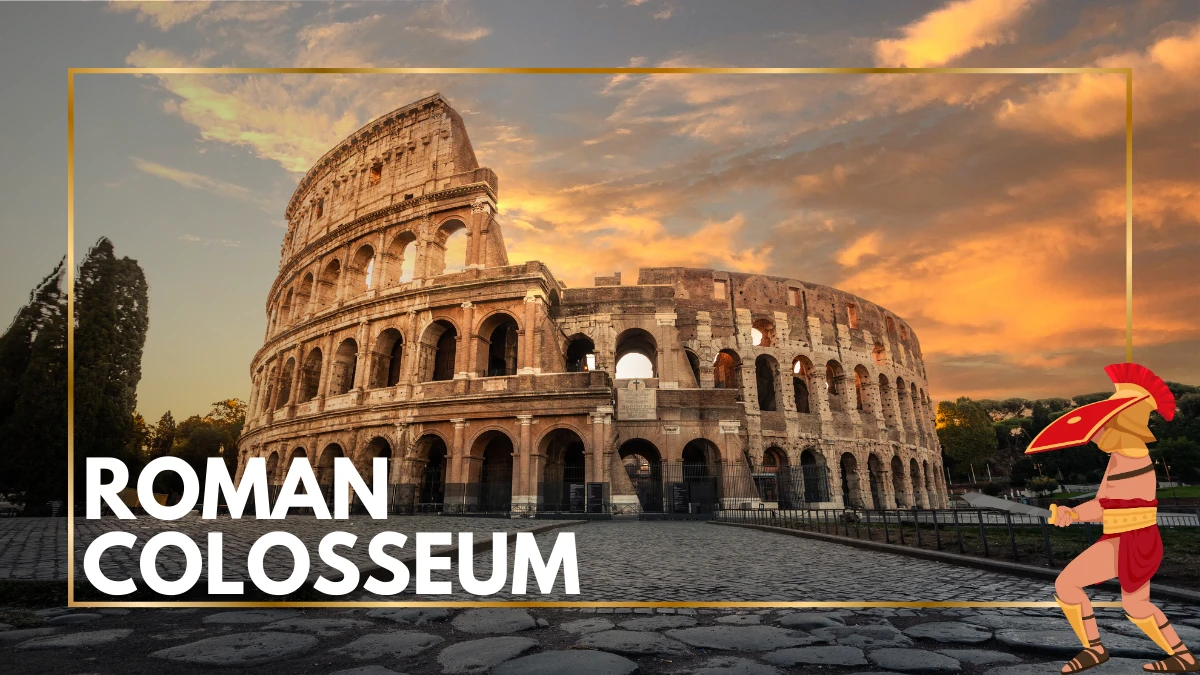Rome Attractions

The Colosseum—formally the Flavian Amphitheatre—is the world’s most famous arena and the beating heart of ancient Rome, where gladiators, wild-beast hunts, and imperial spectacles once drew crowds of tens of thousands.
Today, it anchors the Colosseum Archaeological Park (which also includes the Roman Forum and Palatine Hill) and ranks as Italy’s most visited cultural site: 14.7 million people visited in 2024 alone.
If the Colosseum is on your Rome bucket list (it should be), this guide walks you through tickets, hours, how to visit, what to see, and insider tips—so you can book with confidence and make the most of your time.
Table of Contents
In Summary
- Book online 30 days ahead for your preferred timed slot; bring a matching photo ID.
- Pick the right ticket: General Admission ticket for essentials, Arena Experience if you also want to stand on the platform, and the Full Experience if you wish to access both Arena and the Underground.
- Arrive early (or late afternoon) to dodge crowds; avoid Free Sundays if you dislike queues.
- Wear good shoes, pack sun/heat protection, and travel light for security checks.
- Do Not Miss visiting the Forum & Palatine. They are included with your Colosseum ticket.
Where to buy tickets?
Buy your tickets online for guaranteed entry and your preferred time—onsite availability is limited and there can be long queues.
There is a ticket office in Piazza del Colosseo (near the Temple of Venus and Rome) that issues same-day tickets when available, and also handles free-ticket collections on “Free Sundays.”
But because popular time slots sell out, we strongly recommend online purchase.
Tickets are named and timed, and you’ll be asked to show matching ID at the entrance.
Good to know:
- Tickets are released about 30 days in advance, and time slots fill quickly, especially for special-access areas.
- Prices are standardized (you won’t save any money by buying your tickets onsite)
- Under-18s enter free (still reserve or collect a free ticket), and EU 18–25 get a €2 reduced ticket on most options.
As soon as you complete your online purchase, your e-tickets are sent to your email. On the day of your visit, show your tickets on your phone and a valid photo ID at the turnstiles.
Types of Colosseum tickets & access
Here’s information about three different Colosseum tickets, what they include –
Colosseum & Roman Forum + Audio Guide
This ticket gets you entry to three sites – Colosseum, Roman Forum, and Palatine Hill, and you have 24 hours to explore them all.
It comes with a digital audio guide app available in multiple languages, including English, Chinese, French, German, Italian, Portuguese, and Spanish.
Be at the ‘Individual Entrance Gate’ at the Colosseum at your given timeslot.
Cost: €25
Buy This TicketGuided tour of Colosseum, Arena Floor, Forum & Palatine
A local guide helps you explore the Colosseum, including the Arena Floor – the exact spot where the gladiators once fought.
You also get a headset to hear your guide.
This guided tour of the Colosseum can have a maximum group size of 25 participants and lasts approximately 3 hours.
Guides are available in English, German, French, Italian, and Spanish.
Cost: €79
Book This TourGuided tour of Colosseum, Arena & Underground
This 3-hour tour offers the full experience at the Roman amphitheatre.
A local guide narrates fascinating stories as you navigate through the Underground chambers, Arena Floor, and the rest of the Colosseum.
The live tour guide is available in English, Spanish, and French, and you get headsets to hear your guide.
Cost: €143
Book This TourRelated Reads
Opening hours
The Colosseum opens daily at 8:30 am. Closing time shifts seasonally with daylight – as a rule of thumb, it closes between 4:30 pm in winter and 7:15 pm in peak season.
The last entry is 1 hour before closing.
The park observes standard holiday closures on 25 December and 1 January.
Always confirm the latest schedule before your visit.
Do not miss: Must-see highlights of the Roman Forum
Best time to visit the Colosseum
The best time to visit the Colosseum is as soon as it opens at 8.30 am. Early in the morning, it is not crowded (the tour groups are yet to arrive) and the temperatures are also low.
Late afternoon (about 2–3 hours before closing) is the next-best window with thinning crowds and soft light.
The crowd at the Colosseum is at its peak between 10:30 am and 2:30 pm.
Peak season: April to October is high season for the Colosseum. Book well ahead and consider evening tours to escape the heat and crowds.
Free entry: Free Sundays (first Sunday each month) & national days (25 Apr, 2 Jun, 4 Nov) offer free entry but very long lines and limited access to restricted areas—best avoided unless it’s your only chance.
Related: Best and worst times to visit the Colosseum
How long does it take
- Colosseum (standard route): 60–90 minutes at an unhurried pace for levels 1–2 exhibits and viewpoints.
- Roman Forum & Palatine Hill: add 2–3 hours to walk major temples, basilicas, the Via Sacra, and Palatine terraces.
- Arena & Underground add-on: reserve 30–60 minutes extra for the hypogeum and Arena platform visit.
Heard of Colosseum’s Death Gate? Find out about all the Colosseum entrances.
Where is the attraction & how to reach
Address: Piazza del Colosseo, 1, 00184 Roma. Get Directions
Metro: Line B to Colosseo (the station is beside the amphitheatre).
Tram: Line 3.
Buses: 51, 75, 81, 85, 87, 118 stop nearby.
Tip: If you’re coming from the Vatican, take Metro A to Termini, change to Line B for Colosseo.
What to see at the Colosseum
There’s a lot to experience in and around the amphitheatre. Use the notes below to decide which areas to prioritize and how to pace your visit.
The Arena Floor

A reconstructed platform lets you stand where gladiators fought, with dramatic sightlines into the underground machinery below.
From here, you can look up and appreciate the stadium’s perfect oval and the steep rake of the seating tiers—great for orientation and photos.
Note: The general admission ticket doesn’t guarantee arena access—you’ll need an Arena ticket or the Underground + Arena combo.
The Underground (Hypogeum)
The Underground of the Colosseum involves narrow corridors, animal pens, trapdoors, and hoist shafts which reveal the stagecraft behind Roman spectacles.
Small groups enter with a guide at reserved times, which keeps the space uncrowded and atmospheric.
Expect low ceilings, uneven floors, and dim light—wear stable shoes and be ready for a few steps and tight passages.
Note: Not all tickets get you access to this part of the Colosseum – you need an Underground ticket.
First & Second Orders (Main Galleries)
These wraparound arcades frame classic views through travertine arches to the Arch of Constantine and Palatine Hill.
Don’t miss the interpretive panels that explain construction methods and crowd flow.
Look for the numbered vomitoria (entrance tunnels) that once funneled up to 50,000 spectators to their seats in minutes.
The Upper Levels / Attic (when available)

Special routes occasionally include panoramic upper tiers reached by lift and stairs, offering sweeping vistas over the Forum valley and Rome’s skyline.
Because capacity is limited and access depends on restoration works, these slots book out fast—check availability when you purchase tickets.
The height gives you the widest architectural perspective of the amphitheatre’s ring of arches; it’s also the best place for wide-angle photos.
The Roman Forum & Palatine Hill
Walk Rome’s ancient civic heart—temples, basilicas, triumphal arches—and then climb the Palatine for imperial palace ruins and postcard overlooks.
Highlights many visitors enjoy include the Via Sacra, the Temple of Saturn, and the Arch of Titus, before looping up to terrace viewpoints above the Forum.
Every Colosseum ticket includes entry to both the Roman Forum and Palatine Hill within 24 hours, so keep aside at least a couple of hours for them.
Arch of Constantine & Meta Sudans (outside)
The Arch of Constantine is a 4th-century triumphal arch situated between the Colosseum and the Palatine Hill.
It is on the Via Triumphalis, the route taken by victorious military leaders when they entered Rome.
The Meta Sudans, a large conical fountain, used to be located near the arch, but now you only see its footprint.
It’s a superb spot for exterior photos of the amphitheatre—particularly in late afternoon light.
Trivia: The Colosseum was built on top of an artificial lake. The lake was part of Emperor Nero’s lavish Golden House (a.k.a. Domus Aurea), which was drained and demolished to make way for the iconic amphitheater! More such facts
What to wear for the Colosseum
The Colosseum doesn’t have a dress code, but the site is largely outdoors and paved with ancient stone.
Wear sturdy, closed-toe shoes, sun protection (hat, SPF), and bring a reusable water bottle for Rome’s public fountains around the site.
Security prohibits large luggage and sharp or glass objects; all visitors pass airport-style metal detectors and bag checks, so travel light.
Audio guide
Download the official, free “MyColosseum” app (iOS/Android) with interactive audio guides and maps in English and Italian. It auto-plays along signed routes—including the underground and upper galleries—so you can tour at your own pace.
However, before you download it we suggest you understand the issues faced by tourists who downloaded the app:
Many visitors report that the Colosseum app is frustrating and unreliable. They emphasize the need to download it fully in advance with Wi-Fi, since mobile service at the site is poor and the files are large. Without preparation, the app often drains battery, loads slowly, and struggles with GPS inside the Colosseum. Several users say they ended up not using it at all. Common advice includes bringing headphones to cope with the noisy crowds and, instead of relying on the app, booking a guided tour for a smoother experience.
Visiting the Colosseum at night
If you want to visit the Colosseum after dark, the Sunset tour is the most magical way.
It is the last tour of the day, and you get to see the magnificent Colosseum bathed in the beautiful golden light, with significantly fewer crowds.
An English-speaking local guide leads this 60 to 90-minute guided tour.
Book This TourColosseum by day or by night?
If you’re a first-timer, a daytime visit to the Colosseum is usually better. If you’ve already been or you hate crowds, the night can feel magical. Here’s how to choose:
Pick daytime if you want:
- Full access: Standard day tickets include the Roman Forum and Palatine Hill; night visits focus on the amphitheater only.
- Flexibility: Many time slots daily, self-guided pacing, and more chances to linger at viewpoints and museum panels.
- Photography: Warm light on stone in the first hour after opening and late afternoon; interiors are better lit by daylight.
- Context: You can connect the arena with the Forum/Palatine in one continuous story.
Pick a night if you want:
- Atmosphere & fewer people: After-hours tours are capped and feel quieter, with dramatic lighting on the arches and arena floor.
- Cooler temps (in summer): The stone radiates less heat, and the air is calmer.
- A guided experience: Night access is a small-group, guided tour by design—great if you prefer narration over self-exploration.
Find out more about sunset tours or night tours of the Colosseum when the crowds thin out and the monument is beautifully illuminated.
Is Colosseum worth the effort?
Even though visiting the Colosseum can get overwhelming during the crowded peak summer months, it is worth it.
After all, the amphitheater is a masterclass in Roman engineering: prefabricated vaults, numbered seating, awning technology, and show-stopping hydraulics in the hypogeum.
Visual story: 15 must-know tips before visiting the Colosseum
Things to know before you go
- Bring ID that matches the name on each ticket; no name changes post-purchase. Arrive 15–30 minutes early for security.
- Timed entry is enforced; late arrivals may be denied.
- Book arena/underground well ahead—slots are scarce and get sold out soon.
- Free Sundays (and 25 Apr, 2 Jun, 4 Nov) are first-come, first-served and very crowded; restricted areas aren’t available.
- Accessibility: Lifts assist between some levels/routes; surfaces are uneven. Check current accessible paths on arrival.
- No luggage storage onsite; avoid large bags and glass/aerosols.
- Peak demand: In high season, up to 25,000 visitors may pass through in a single day—book early and be at the entrance by 9 am.
Restaurants new Colosseum
There are no restaurants or food counters inside the Colosseum complex. However, you will find bookshops on levels 1–2 and water fountains outside the site.
For lunch or dinner, try out the adjacent Monti and Celio neighborhoods.
Options range from casual cafés to rooftop fine dining with Colosseum views (e.g., Aroma at Palazzo Manfredi).
Map of the attraction: For turn-by-turn routes, floor plans, and live content, use the MyColosseum app’s interactive maps.
Frequently asked questions
Here are some questions tourists ask before booking their tickets for the Colosseum.
Do I need to book in advance?
Yes. All Colosseum tickets are timed, and popular slots (arena/underground, late morning) sell out early. Book as soon as you finalize your visit date.
Are tickets personalized? Do I need ID?
Colosseum tickets are issued to individuals (this is done to avoid black-marketeering), which is why staff can request a matching photo ID at the entrance.
What’s the difference between Standard, Arena, and Underground tickets?
Standard: Colosseum Levels 1–2 (no arena).
Arena: Adds the reconstructed Arena platform.
Underground & Arena: Adds a staff-accompanied visit to the hypogeum plus the arena.
Do I need to buy separate tickets for the Roman Forum and Palatine Hill?
No, all Colosseum tickets include access to the Roman Forum and Palatine Hill. However, you must visit them within 24 hours.
Are there reduced or free tickets?
Colosseum entry is free for all under-18-year-olds. EU citizens aged 18–25 get a reduced rate. You must bring an ID to prove eligibility.
How early should I arrive at the Colosseum?
Be at the gate 15–30 minutes before the time on your ticket for security and ID checks.
What if I’m late for my time slot?
Late arrivals may be re-accommodated only if capacity allows—you might have to wait or forfeit the slot.
Which Colosseum entrance do I use?
Follow signs for your ticket type (standard vs. guided, etc). Colosseum staff are available to direct you to the correct queue.
Can I bring a stroller or wheelchair?
Small strollers are fine. There are lifts on certain routes and step-free sections, but surfaces can be uneven—ask staff for the accessible path map.
Are there restrooms and water?
Yes—restrooms are available. Bring a reusable bottle to fill at nearby public fountains outside the site.
Is there Wi-Fi at the Colosseum?
Many tourists have complained of limited reception at the Colosseum, which gets even worse because of so many people trying to connect at the same time. That’s why it is better to download any apps or e-tickets beforehand.
What is NOT allowed inside the Colosseum?
No large luggage, glass containers, aerosols, or sharp objects. All visitors pass airport-style security.
Is there bag storage?
There’s no left luggage at the Colosseum. It is best to bring only a small daypack.
Do I visit the Forum before or after the Colosseum?
Either works. Many travelers do the Colosseum first (early), then the Forum & Palatine while it’s still cool.
Can I leave and re-enter?
Colosseum tickets allow one entry per site (Colosseum, Forum & Palatine Hill) within 24 hours.
Is the site suitable for kids?
Yes, the Colosseum is kid-friendly. However, bring snacks, water, sun hats, and plan breaks. The arena and underground excite older kids; younger ones may tire quickly in the heat.
Where can I get the best exterior photos?
Great angles include the Arch of Constantine side (late afternoon light), Via Nicola Salvi near the metro, and Oppian Hill Park above the north side.
Which attraction or area can I pair with the Colosseum?
Pair with Domus Aurea (separate ticket, limited times) or stroll the Monti neighborhood for lunch after your visit.
